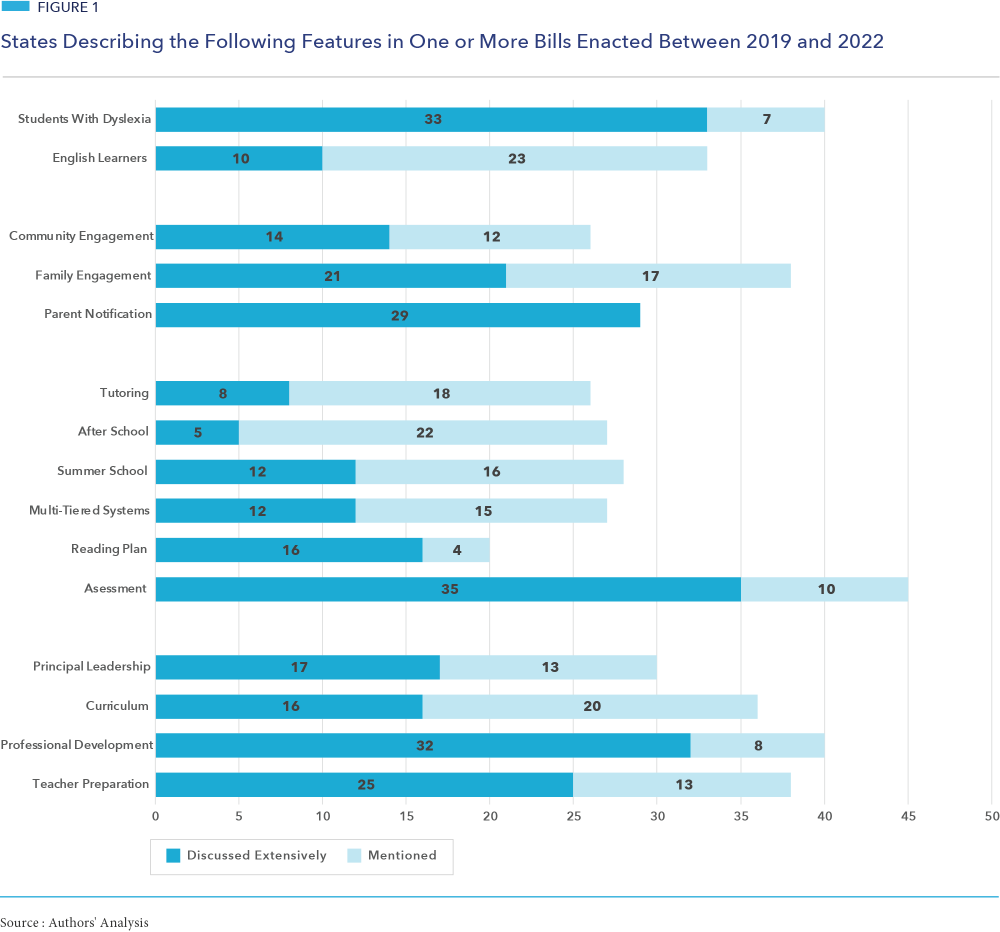Legislation plays a pivotal role in shaping the direction of education. According to a report released by the Albert Shanker Institute, 45 states, along with the District of Columbia, have passed legislation to reform reading instruction, with the majority of these states (34 to be exact) directly referencing the essential components of literacy as described by the National Reading Panel. This legislation recognizes the significance of equipping educators with tools and strategies rooted in scientific research to foster effective reading skills among even our youngest learners.
Changing how reading is taught is challenging. It requires investing time, money, and people. Past efforts to make these changes have shown that a lot of work is needed to train teachers, implement new lesson plans, and ensure everyone is on board with these changes, all led by effective leaders.
We saw a similar push in legislation in 2001 with Reading First (part of the No Child Left Behind Act), a federal program specifically focused on K-3 reading within low-performing Title I schools. However, these bills are crafted to impact instructional practices across all schools, regardless of their income status or performance level.
The Science of Reading and Its Impact
The term “Science of Reading” has gained prominence, encapsulating the body of research that informs effective reading instruction. As policymakers and educators align their practices with this scientific foundation, impacting student outcomes becomes within reach.
Scientific research has unveiled the intricate cognitive processes involved in reading, shedding light on how individuals acquire, process, and comprehend written language. The Science of Reading goes beyond traditional teaching methods, emphasizing the importance of systematically teaching the relationships between sounds and letters, decoding skills, and the structure of language. This evidence-based foundation informs instructional strategies and addresses learners’ diverse needs, fostering a more inclusive and equitable approach to literacy education.
The impact of embracing the Science of Reading is evident in improved literacy outcomes for students across various demographic groups. Studies consistently show that students exposed to science-based reading instruction exhibit enhanced phonological awareness, decoding skills, and comprehension abilities. By understanding how the brain learns to read, educators can tailor their instruction to align with the natural processes of language acquisition, leading to more effective learning outcomes.
Looking Ahead in Literacy
With legislative changes comes the need for professional development that empowers educators to navigate the evolving landscape of literacy education. IMSE Impact Structured Literacy Professional Development stands at the forefront of translating the Science of Reading into actionable strategies for educators. Our programs are designed to meet and exceed the requirements of evolving legislation, providing educators with the knowledge, tools, and support they need to implement science-based reading instruction effectively.
In this age of change, adaptability is key. Our professional development opportunities don’t just comply with the legislative mandates of today; we are always following the latest research in the Science of Reading and anticipate future shifts in education, ensuring that educators are equipped to navigate emerging trends. By fostering a culture of continuous learning, IMSE empowers educators to be proactive agents of change, advocating for the availability of evidence-based literacy practices in their classrooms and throughout their districts.

